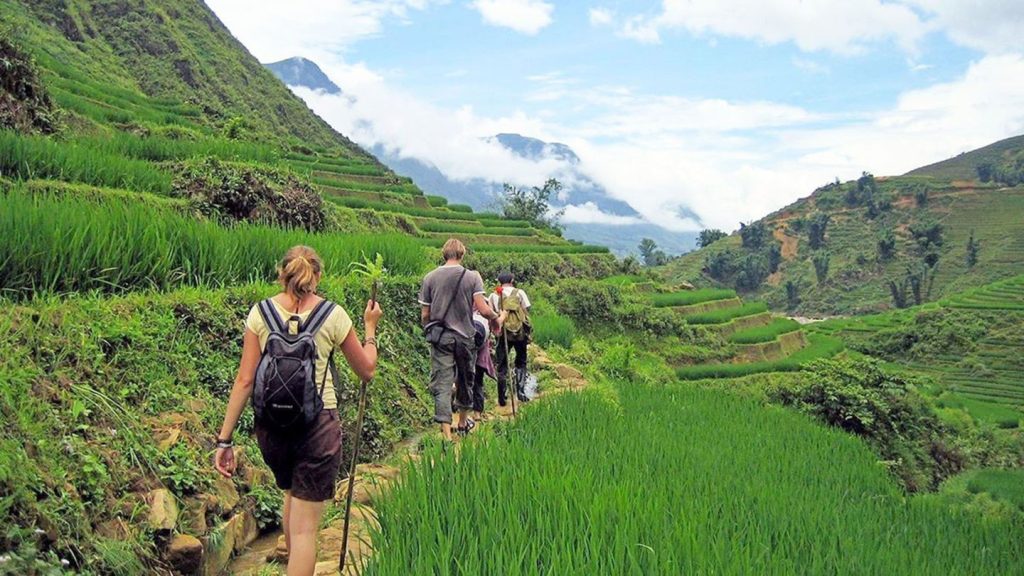Travel experience
Trekking in Sapa: A Journey Through Vietnam’s Breathtaking Highlands
Nestled in the northern mountains of Vietnam, Sapa is a paradise for adventure seekers, nature lovers, and those looking to experience the authentic cultures of Vietnam’s ethnic minorities. With its rolling terraced rice fields, misty valleys, and vibrant hill tribe villages, Sapa offers an unforgettable trekking experience that immerses you in the country’s stunning landscapes and rich heritage.
Why Trekking in Sapa is a Must-Do Experience
Trekking in Sapa is more than just a physical challenge—it’s an opportunity to connect with nature, meet friendly locals, and witness a way of life that has remained unchanged for centuries. The breathtaking scenery and the warm hospitality of the ethnic minority communities make this an essential stop on any Vietnam itinerary.
The Best Trekking Routes in Sapa

1. Cat Cat Village Trek (Easy)
Perfect for beginners, this short trek takes you to Cat Cat Village, home to the H’Mong people. The route winds through scenic rice terraces and leads to a beautiful waterfall, offering a glimpse into traditional village life.
2. Lao Chai – Ta Van Trek (Moderate)
This picturesque trek passes through Lao Chai and Ta Van villages, where you’ll encounter both Black H’Mong and Dzay communities. The trail meanders through lush valleys, endless rice terraces, and wooden stilt houses, providing stunning photo opportunities at every turn.
3. Fansipan Mountain – The Roof of Indochina (Challenging)
For the ultimate adventure, challenge yourself to climb Fansipan Mountain, the highest peak in Indochina at 3,147 meters. This challenging trek takes two to three days and rewards you with breathtaking panoramic views from the summit. For those short on time, a cable car ride offers a quicker route to the top.
What to Expect on Your Trek
Local Culture & Ethnic Minority Villages
Sapa is home to various ethnic groups, including the H’Mong, Dao, Tay, and Dzay people. Trekking through their villages allows you to observe their daily life, traditional crafts, and colorful clothing. Many treks include homestay experiences, where you can enjoy home-cooked meals and learn about their customs firsthand.
Spectacular Landscapes
No matter which trek you choose, expect to be surrounded by dramatic landscapes: emerald-green rice terraces, winding rivers, bamboo forests, and towering mountains shrouded in mist. Sapa’s scenery changes with the seasons, offering golden rice fields in autumn and misty, mystical views in winter.
Tips for an Amazing Trekking Experience
- Wear comfortable trekking shoes – The trails can be muddy, especially during the rainy season.
- Bring lightweight rain gear – Sapa’s weather is unpredictable, and a sudden drizzle is common.
- Pack light but carry essentials – Sunscreen, water, snacks, and a camera for those stunning views!
- Respect local traditions – Always ask before taking photos of locals and support village crafts by buying handmade souvenirs.
- Choose a local guide – Hiring a local guide enriches your experience, as they can share fascinating insights about the land and people.
When is the Best Time to Visit Sapa for Trekking?
The best seasons for trekking in Sapa are March to May and September to November. Spring offers lush greenery and blooming flowers, while autumn presents golden rice terraces at their peak beauty. Avoid the winter months if you’re not a fan of cold weather, as temperatures can drop below freezing.
Conclusion
Trekking in Sapa is not just about the adventure—it’s about discovering the soul of Vietnam’s highlands. Whether you take an easy stroll through ethnic villages or conquer Fansipan’s towering heights, the beauty and cultural richness of Sapa will leave an unforgettable mark on your journey. Pack your bags, lace up your boots, and get ready to embark on one of Vietnam’s most awe-inspiring experiences!




